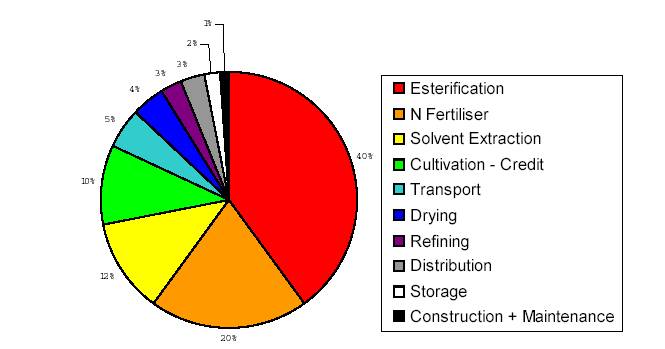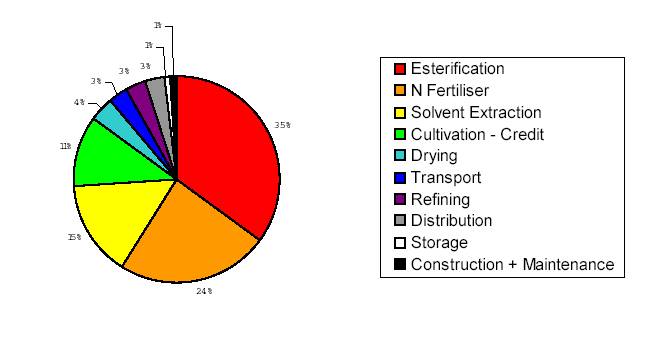
Life Cycle Assessment (or LCA) is a technique to quantitatively assess the environmental impact and the energy requirements of a product or service from its initial raw materials to its final disposal (i.e. cradle to grave). This assessment takes into account any other products or services that may be required to facilitate its use and/or production.
One of the key advantages of using LCA is it allows a direct and fair comparison between two products or services with regards to the environmental and energy impact. In LCA every relevant detail is taken into consideration. This encompasses the distance the raw materials have to be exported to the type of packaging that is used to house the final product.
The level of detail achieved and the quality of the information used determines the accuracy of the assessment. Due to this kind of comparative assessment LCA is an excellent tool to weigh costs and benefits and is therefore a useful aid in decision-making and policy analysis.
When considering LCA for biofuels, it must take into account the evaluation of the energy and global warming costs of producing biodiesel from energy crops in the UK and comparing this with other fuels and relevant energy saving measures.
Due to the very complex nature of LCA and the fact that so many different factors need to be taken into account we have lacked the time and resources to conduct our own life cycle assessment and so are relying on other work carried out in this area.
Biodiesel LCAThe details of this section are based on a report commissioned by DEFRA and carried out by the Resources Research Unit of Sheffield Hallam University in January 2003. The report entitled “Evaluation Of The Comparative Energy, Global Warming And Socio-Economic Costs And Benefits Of Biodiesel” produced a life cycle assessment for Biodiesel based on already existing studies, taking the most relevant data for Biodiesel production in the UK. (REF23)
The Resources Research Unit performed two assessments for biodiesel production. One where the biodiesel is produced using more conventional means and one where it is produced using a modified production. This modified production used low nitrogen methods of cultivation. It also uses the rapeseed straw as an alternative heating fuel for the drying, solvent extraction, refining and esterification process. And finally it uses biodiesel as the fuel for agricultural machinery and transportation.The following report will only detail the conventional production in an attempt to be reasonably conservative. If you interested in reading the report for yourself then you can find it here .
Since biodiesel can be described as ‘carbon neutral’ then any CO2 emissions associated with it must come from a source outside that of combustion of the fuel. In fact there are many sources of CO2 associated with biodiesel production. Most of the emissions come from the esterification process, the production of fertilizer and the extraction of the oil from the seed. These CO2 emissions are not always produced directly from the process but taken from the energy requirement. What this means is that the energy a process uses has an associated emission. For example electricity used in the esterification process may well come from a coal power plant, so the amount of electricity used can be related to the amount of CO2 released from the plant.
It was found that for every ton of biodiesel produced 916 ± 52 kg CO2 was released into the atmosphere. The chart below shows the proportions of where these emissions come from.
 |
| Representative Carbon Dioxide Outputs for Biodiesel by Conventional Production from Oilseed Rape in the United Kingdom |
GHG emissions can be calculated in just the same way as for CO2 emissions. In order to group these emissions together each kg of GHG has an equivalent mass of CO2 based on the 100-year global warming potential.
For each ton of biodiesel produced the equivalent of 1,516 ± 88 kg of CO2 are released.
By quantifying the amount of energy required to produce biodiesel it is possible not only to see what processes require the most energy but also to establish an energy balance over the life cycle. I.e. the energy you get out against the energy you put in.
For every ton of biodiesel produced 16,269 ± 896 MJ of energy is required.
The chart below shows how this is broken down.
 |
| Representative Primary Energy Inputs for Biodiesel by Conventional Production from Oilseed Rape in the United Kingdom |
Not surprisingly the largest energy demands match up with the CO2 emissions.
A ton of biodiesel will contain around 40,800MJ of energy.
Energy Balance = Energy OUT / Energy INFor these number to mean anything however there has to be something against which to compare them. In the case of biodiesel this would be the LCA of fossil diesel.
CO2 Emissions
For each MJ of biodiesel produced 0.025Kg of CO2 is released.
For each MJ of fossil diesel produced 0.087Kg of CO2 is released.
>From this it is possible to work out the emissions savings from the introduction of biodiesel produced in the UK. In the section on the quantitative biofuels production in the UK we worked out how much fossil diesel could be displaced by growing rapeseed on half the setaside land in the UK. This land produced enough biodiesel to displace 2% of current UK diesel consumption by volume.
To work out the emission savings the following steps are used:
2% of current diesel consumption = 0.38 billion litres
Energy in 0.38 billion litres of diesel = 0.38 * 45.1
= 17.1 billion MJ
Emissions from 0.38 billion litres of diesel = 17.1 * 0.087
= 1.49billion Kg of CO2
Biodiesel has a lower energy content than fossil diesel so rather than find the emissions for biodiesel from the volume being replaced it is more correct to find the emission from the energy being replaced, therefore:
Emissions from 17.1 billion MJ worth of biodiesel = 17.1 * 0.025
= 0.43 billion Kg of CO2
Total CO2 emissions savings = 1.49 – 0.43
= 1.06 billion Kg of CO2 every year over full fuel life cycle.
In 2000 the UK produced 148 million tonnes of CO2 (REF37), or 148 billion kg.
So a 2% biodiesel blend would create a 0.72% reduction in the UK's total CO2 emissions.
GHG Emissions
Exactly the same process can be used to work out the GHG emissions and savings.
For each MJ of biodiesel produced 0.041Kg of GHG CO2 equivalent is released.
For each MJ of fossil diesel produced 0.095Kg of GHG CO2 equivalent is released.
Total GHG saving each year = 0.92 billion Kg of GHG CO2 equivalent over the full fuel life cycle
Energy Requirements
For each MJ of biodiesel produced 0.45 MJ is required.
For each MJ of fossil diesel produced 1.26 MJ is required.
Fossil diesel is an energy negative fuel, requiring more energy to produce than it has available within it. Biodiesel is an energy positive fuel containing more energy than was required to produce it.
Bioethanol LCAUnfortunatly during the project we were unable to find a Life Cycle Assessment for bioethanol that was as good and as transparent as the assessment we found for biodiesel.
What we did find however were figures produced by the United States Department of Energy’s National Renewable Energy Laboratory, (NREL). These figures Stated that for every gallon of petrol that is displaced with bioethanol, then 7.3 Kg to 10 Kg of carbon dioxide emission’s can be avoided (1.8-2.5 Kg of carbon equivalent) (REF38).
This is equivalent to 7.3kg to 10kg of CO2 displaced per 3.785412 litres of bioethanol.
Or 1.93kg to 2.64kg of CO2 displaced per litre of bioethanol.
If half the UK setaside land was used to produce bioethanol then around 1.395 billion litres of bioethanol would be produced. If we are conservative and say 2Kg of CO2 are displaced then:
Total CO2 savings = 2 * 1.395 = 2.79 billion kg
This is equivalent to a 1.9% reduction in the UK's total CO2 emissions.